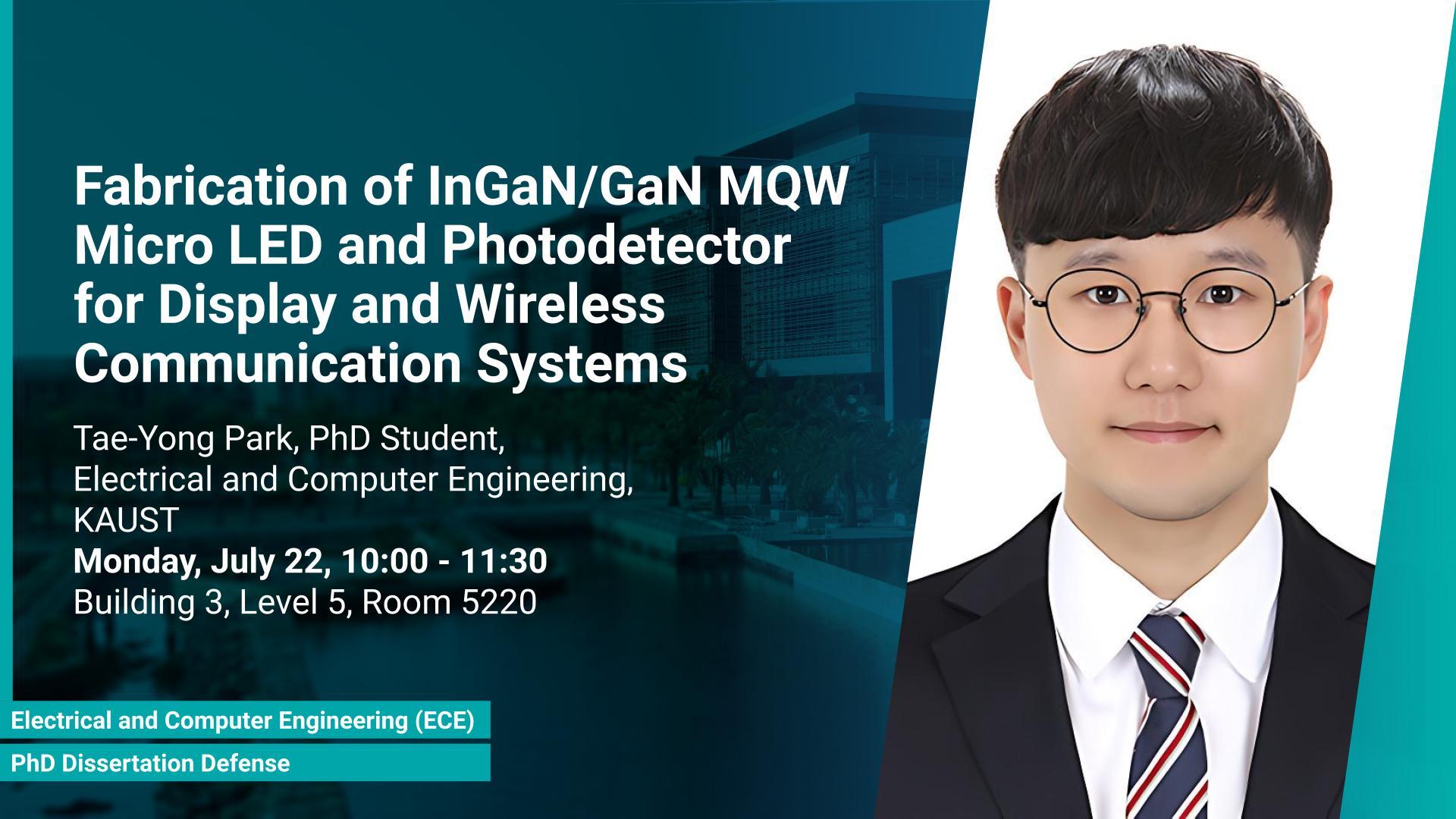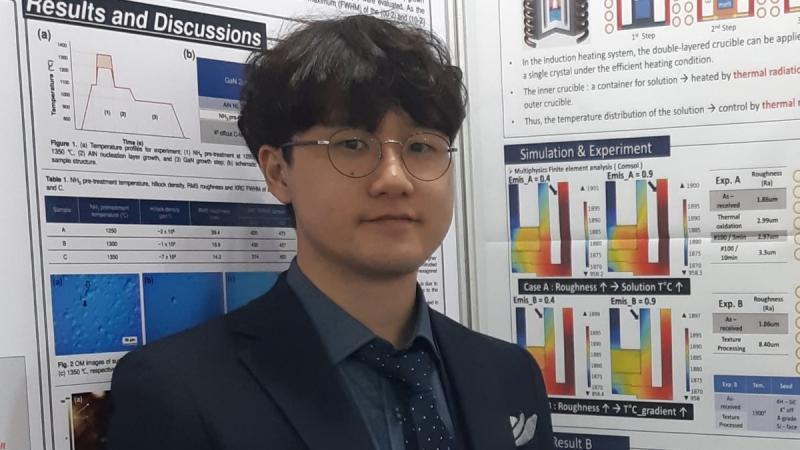Event Start
Event End
Location
Abstract
This dissertation focuses on the fabrication and characterization of InGaN/GaN multiple quantum well (MQW) micro-light-emitting diodes (micro-LEDs) and photodetectors (PDs) for advanced display and wireless communication systems. Micro-LEDs offer superior efficiency, contrast, stability, and response time compared to conventional display technologies. Their fast response time suits them particularly for visible light communication (VLC) and high-speed optical wireless communication. Key challenges addressed include performance degradation due to sidewall non-radiative recombination. Various passivation methods, including atomic layer deposition (ALD) and plasma-enhanced chemical vapor deposition (PECVD), were analyzed and demonstrated to enhance device performance. The study also reviewed micro-LED transfer technologies and the integration of color conversion materials such as phosphors, quantum dots, and perovskites, successfully fabricating passive array micro-LEDs for full-color displays. Innovative methods for exfoliating thin InGaN/GaN LED layers for hybridization and transfer to various substrates were introduced, including laser lift-off and remote epitaxy. Practical applications of porous-assisted exfoliation methods were demonstrated, leading to flexible, transparent, and high-efficiency LED devices. The application of InGaN micro-LEDs in VLC was a significant focus, highlighting advantages such as higher bandwidth, improved security, and energy efficiency over traditional RF communication systems. Key factors affecting VLC performance, including modulation bandwidth, carrier recombination lifetime, and the quantum confined Stark effect (QCSE), were introduced. Fabrication and characterization results of micro-LEDs optimized for VLC demonstrated their potential for high-speed data transmission. Furthermore, the integration of perovskite materials with InGaN micro-LEDs for dual-wavelength VLC was explored, detailing the fabrication process and analyzing their communication characteristics. This integration enhanced data transmission rates and system versatility. Overall, this dissertation presents advancements in micro-LED and photodetector technologies, addressing key challenges and proposing innovative solutions. The findings contribute to developing next generation display technologies and high-speed optical communication systems, paving the way for future research and commercialization.
Brief Biography
Tae-Yong Park is pursuing a Ph.D. in Electrical Engineering at King Abdullah University of Science and Technology (KAUST), Saudi Arabia, from August 2020 to present. He earned his M.S. in Materials System Engineering at Pukyong National University, Republic of Korea, from March 2018 to February 2020, and his B.S. in Materials System Engineering at Pukyong National University, Republic of Korea, from March 2012 to August 2017.


